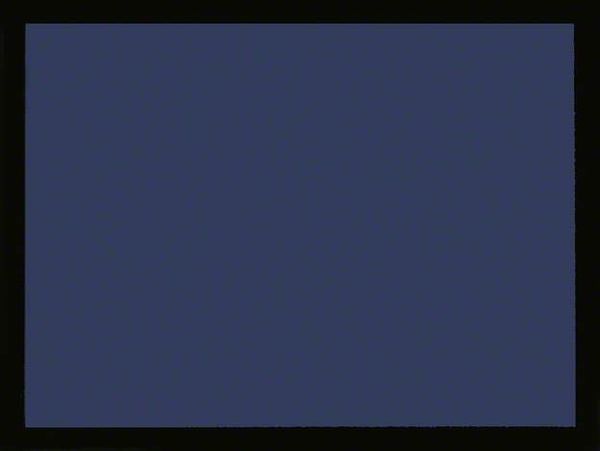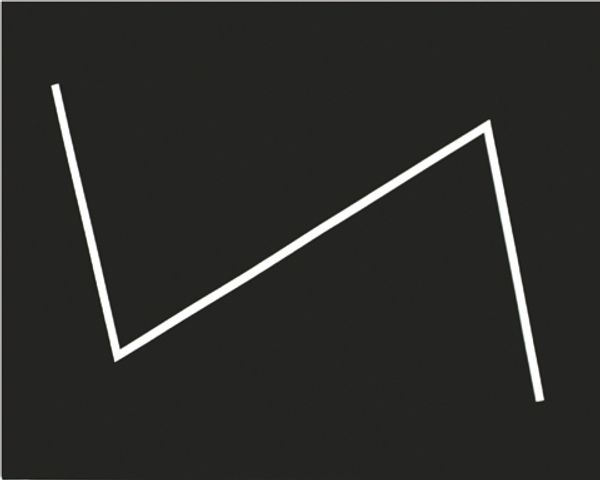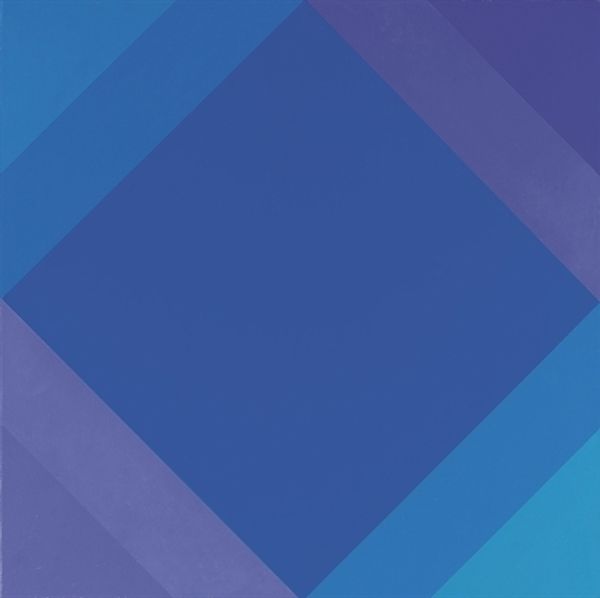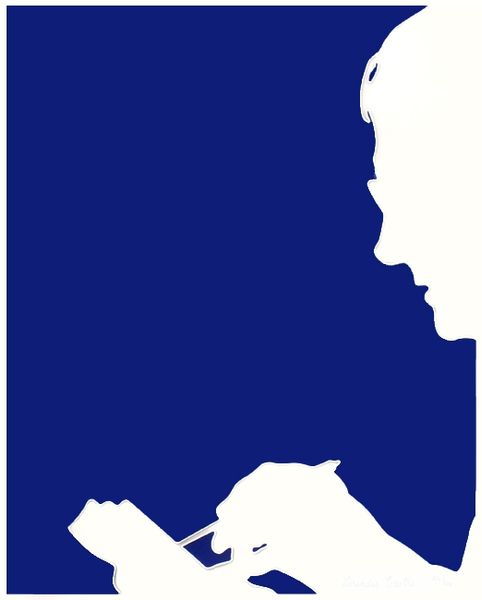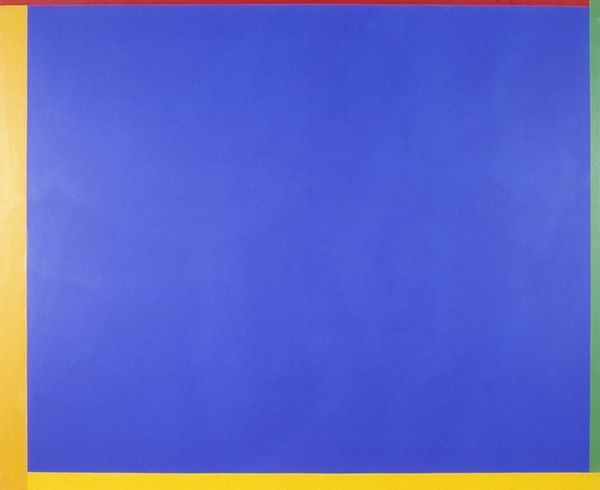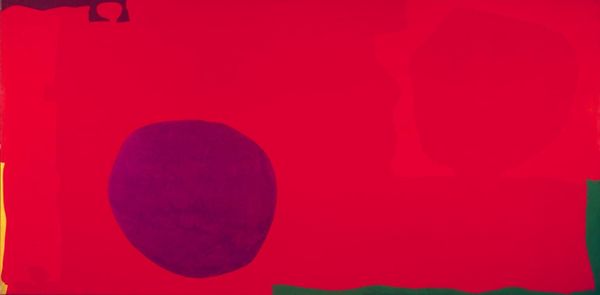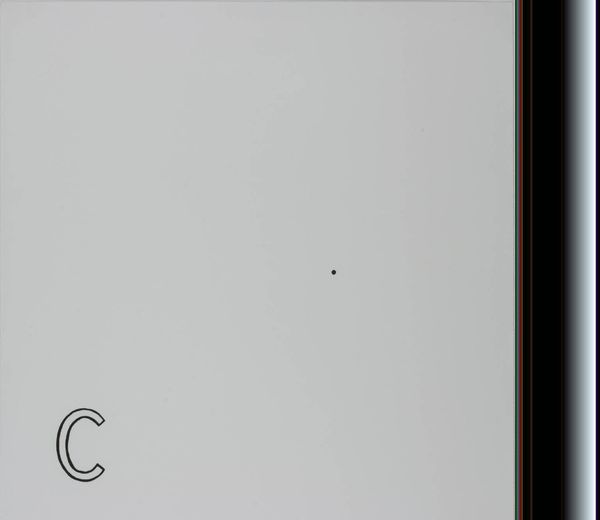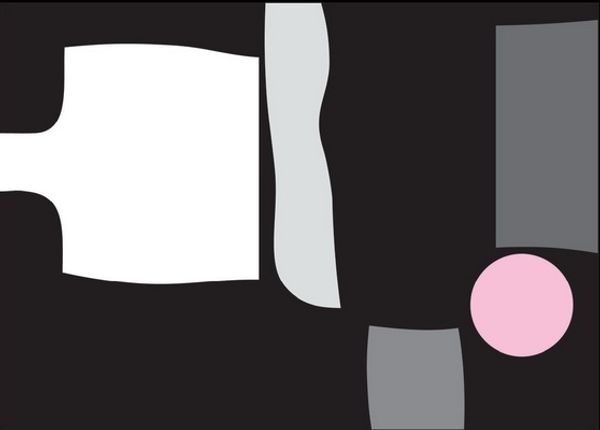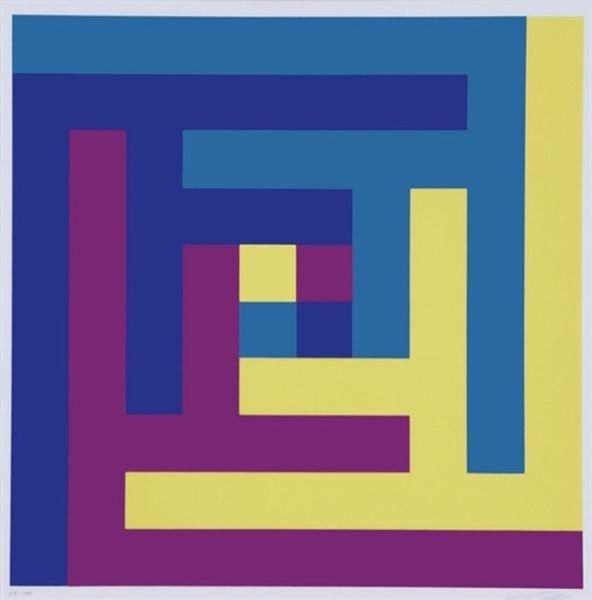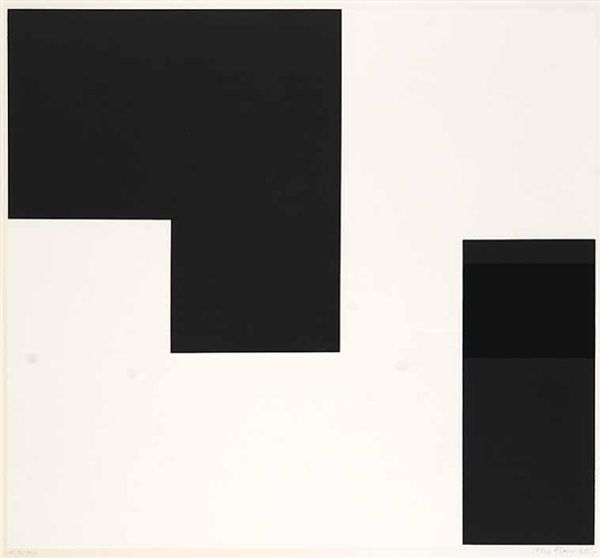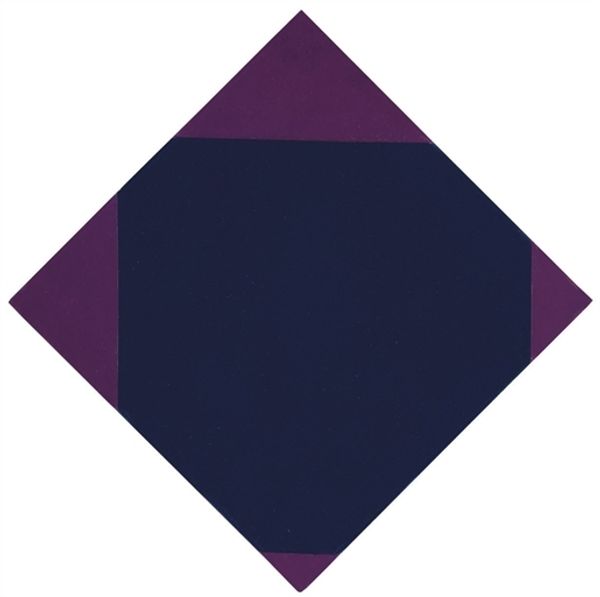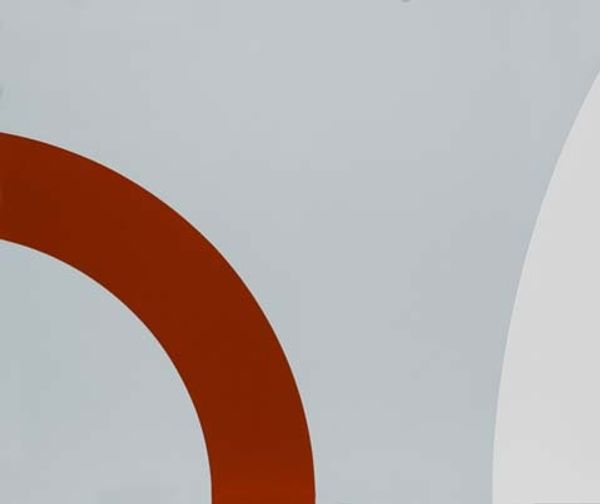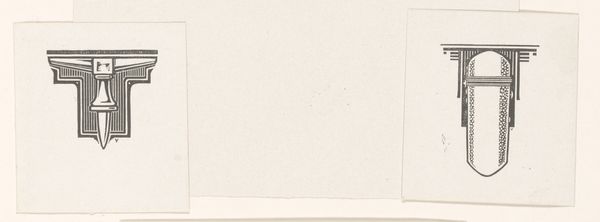
Dimensions: overall (two panels): 335.28 × 487.68 cm (132 × 192 in.)
Copyright: National Gallery of Art: CC0 1.0
Editor: So, this is an Untitled work by David Novros, potentially created between 1965 and 1986, using acrylic paint. The first thing that strikes me is its stark simplicity. Two blue geometric shapes – almost like fragmented frames – set against a vast white background. How do you interpret this work, considering its historical context? Curator: Well, looking at this piece, I’m immediately drawn to its participation in the dialogues surrounding Minimalism and Color Field painting that were so potent during its possible period of creation. Consider the socio-political landscape: the late '60s were marked by increasing social unrest, and art became a site for questioning established norms. Novros's reduction of form echoes a desire to move away from representational art towards something purer, more elemental. But how do you see this work engaging with the viewer, knowing these movements happened? Editor: I suppose it invites a focus on pure form and color, devoid of narrative. There’s an almost industrial feel to the geometry that echoes the growing presence of manufacturing, in my opinion. Does this simplicity also speak to accessibility in the art world? Curator: That's a fantastic point. Minimalism, in its attempt to strip away ornamentation, inadvertently challenged the established art institutions and elitist notions of taste. The starkness and lack of readily discernible meaning forced viewers to engage directly with the artwork's materiality and their own perceptions. What could this signify in the context of public spaces displaying such work? Did the gallery and museum spaces play roles in these statements, too? Editor: It certainly makes me rethink the role of a gallery; its white walls suddenly becoming less neutral and more complicit. This has given me a completely fresh perspective on minimalism! Curator: And that's precisely what engaging with art history can do. We started with the simple forms and finished by considering some questions about institutional critique!
Comments
No comments
Be the first to comment and join the conversation on the ultimate creative platform.
